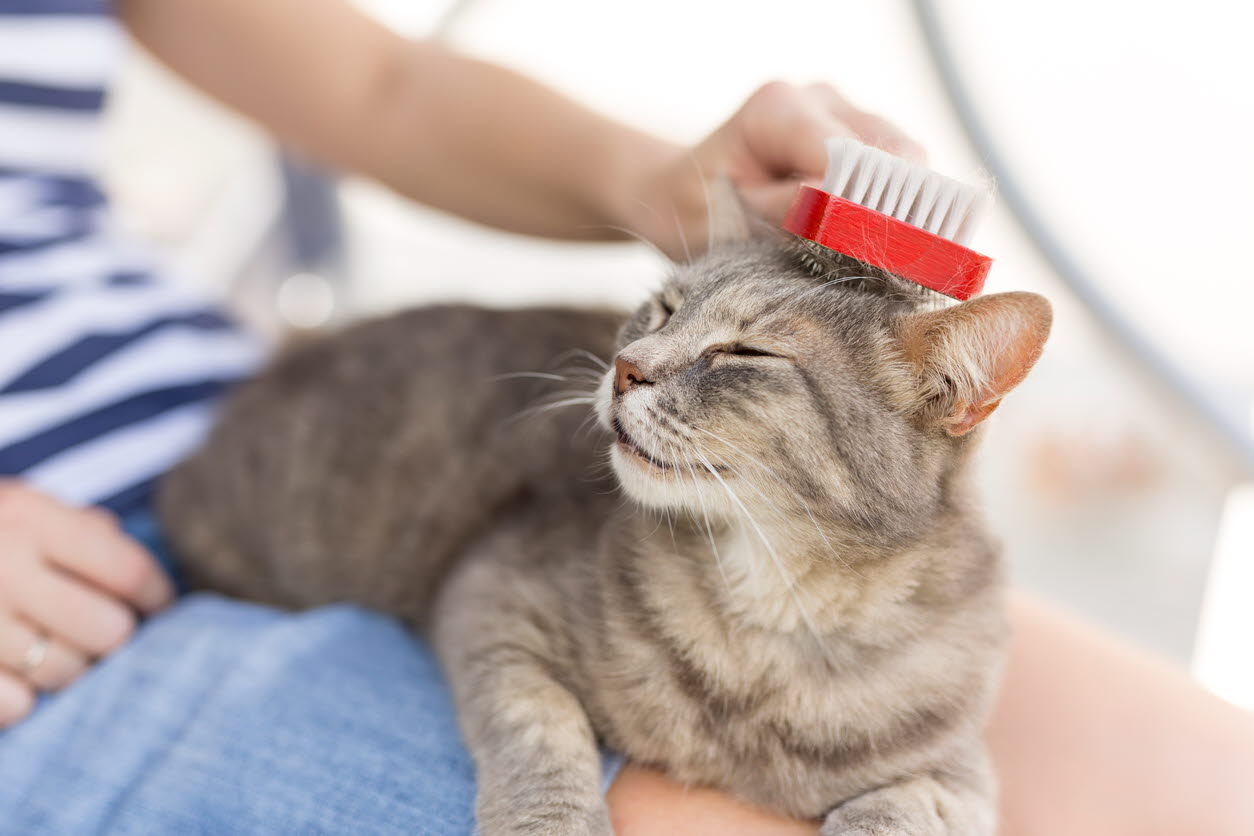Why is my pet shedding so much hair?

Cuddling your pet is one of the joys of pet ownership, but no one loves the pet hair that can end up all over clothes and furniture afterwards!
How much should my pet shed?
The amount of natural fur-shedding from your pet will depend on two things:
The breed of your pet: In dogs, breeds that require clipping (e.g. schnauzers, poodles) will shed very little, whilst short or coarse-haired breeds (e.g. pugs, staffies) will shed mildly to moderately, and long-haired or double-coated breeds (e.g. golden retrievers, German shepherds) tend to be high-level shedders.
The seasonal conditions: If an animal spends a lot of time outdoors, they are more likely to develop a thick winter coat, which they then shed at the end of winter as the weather warms up. However, if your pet is mostly indoors, they may shed steadily throughout the year.
Can I stop my pet from shedding?
There isn’t anything you can do to prevent your animal from shedding. However, regular grooming of your pet will remove most loose hair, so it doesn’t end up all over your house!
Depending on your pet’s breed, they may require grooming every day (especially if they’re shedding their winter coat), or once to twice weekly. Make sure to use appropriate grooming tools for your pet’s fur type – ask your veterinary team or groomer if you’re unsure. Short-haired pets usually require either slicker brushes or grooming mitts. Breeds with ‘double coats’ require the use of de-shedding tools to remove their dense undercoat, and those pets with long hair will need a detangling comb or brush to prevent matting of the coat.
Is my pet shedding more than usual?
An animal that is shedding normally will have healthy, smooth skin, and fur coverage typical of their breed, with no bald patches (except for those areas that are normally sparsely furred, such as the temples and belly). If your animal is developing abnormally thin fur or bald patches, it’s best to book an appointment with your veterinarian.
Excessive hair loss (or poor hair growth) can occur due to:
- Skin disease e.g. environmental or food allergies, bacterial or fungal infections
- Skin parasites e.g. mites, fleas, lice
- Overgrooming due to anxiety, stress or pain (most common in cats)
- Hormonal imbalance diseases e.g. hypothyroidism
- Alopecia X, a balding condition of Nordic dog breeds
It’s also important to note that overzealous use of some de-shedding grooming tools can remove too much of your pet’s fur, creating bald patches, so take care when using these tools and consider watching online tutorial videos on their usage.
If my cat is bringing up hairballs, does this mean they’re shedding too much?
When cats groom themselves, it’s normal for them to swallow some hair – this should pass through their gut and out with the faeces. If your cat is vomiting up hairballs, it generally suggests that either your cat is swallowing too much hair, or that hair is not passing normally through the gut as it should do. Read more about cat hairball causes, treatment and prevention here.
To keep your pet’s skin and coat healthy (and your clothes and house clean), invest in some good pet grooming tools and use them regularly, particularly if your pet is shedding.
